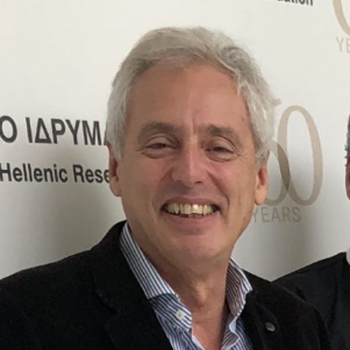Speaker
Efthymios Nicolaidis
Time
2024.10.16 16:00-17:30
Abstract
The Antikythera mechanism, found in 1900 in an ancient Greek boat shipwrecked off the coast of the island of the same name, has been the subject of research by many scholars from different disciplines since 1902. Indeed, in 1902, in the boxes of the shipwreck findings brought to the Archaeological Museum of Athens, a strange object was found that had gears and inscriptions on it, something that greatly surprised specialists in the history of ancient science and technology. In 1905, the German archaeologist Albert Rehm noticed the existence of a parapegma on the object, drew a gear train and considered the instrument to be a kind of planetarium. Admiral Theophanides built the first model of the Mechanism in 1934. The famous historian of science Derek de Solla Price studied the mechanism from 1950 to 1974 in collaboration with Charalampos Karakalos, who was the first to take X-rays of the mechanism to reveal its interior. Derek Price built a much more complicated model than that of Theophanides. His book Gears from the Greeks rekindled international interest in the mechanism. In the 1980s, Michael T. Wright, built a model that revolutionized our conception of the mechanism: Wright considered the mechanism to be a planetarium showing the movements of all the planets known in antiquity, and noticed that the rear face had spirals rather than connecting circles; he also noticed that the Moon's gear system has a pin and slot mechanism.
In 2005, an international multi-disciplinary team (AMRP) was formed and, in collaboration with Hewlett Packard and X-Tek systems, scanned the 82 pieces of the mechanism using a purpose-built scanner, as well as taking surface photographs using a special technique. This team, which includes archaeologists, paleographers, historians of science and technology and mechanics, published in May 2016 the final results concerning the inscriptions, in a special issue of the journal Almagest. Based on the inscriptions, the team corroborated the hypothesis of the existence of lost planetary gear trains. In 2018, a team of Greek researchers lead by Aristidis Voulgaris contested the existence of planetary gears, based on the careful observation of the main axis of the Mechanism. Finally, in 2021, a team lead by Tony Freeth published an alternative model of the front of the Mechanism replacing the hypothetical pointers showing the planets by rings bearing colored spheres.
From 2015, a new diving camping which continues is organized on the site of the shipwreck. We also will present the results of this campaign.
Bio
Professor Efthymios Nicolaidis was born in Nea Smyrni, Athens, Greece, in 1954. He earned his Bachelor's degree in Physics from Universit é Paris-Sud XI in 1978 and received his Ph.D. in the History of Science from the École des Hautes Études en Sciences Sociales (ÉHÉSS) in 1982.
From 1987 to 2022, Professor Nicolaidis worked for the National Hellenic Research Foundation (NHRF) and as Emeritus Director for Institute of Historical Research now. He served as President of the International Union of the History and Philosophy of Science and Technology/Division of History of Science and Technology (DHST/IUHPST) from 2013 to 2017. In addition, he has been twice elected as Permanent Secretary of the International Academy of History of Science (IAHS) in 2017 and 2023.
Professor Nicolaidis' research interests are science and religion (science in Byzantium and the Ottoman Empire), history of science policy, science and society and history of astronomy. He has published numerous books and articles, including Science, Technology and the 19th century State, Multicultural science in the Ottoman Empire, Ferdinand Verbiest and Jesuit Science in 17th century China,An annotated edition and translation of the Constantinople manuscript 1676, Greek Alchemy from Late Antiquity to Early Modernity, Science and Eastern Orthodoxy,From the Greek Fathers to the age of globalization. Also the editor of many international journals like: Almagest, International journal for the history of scientific ideas, Archives Internationales d’Histoire des Sciences and Revue d’histoire des sciences.

